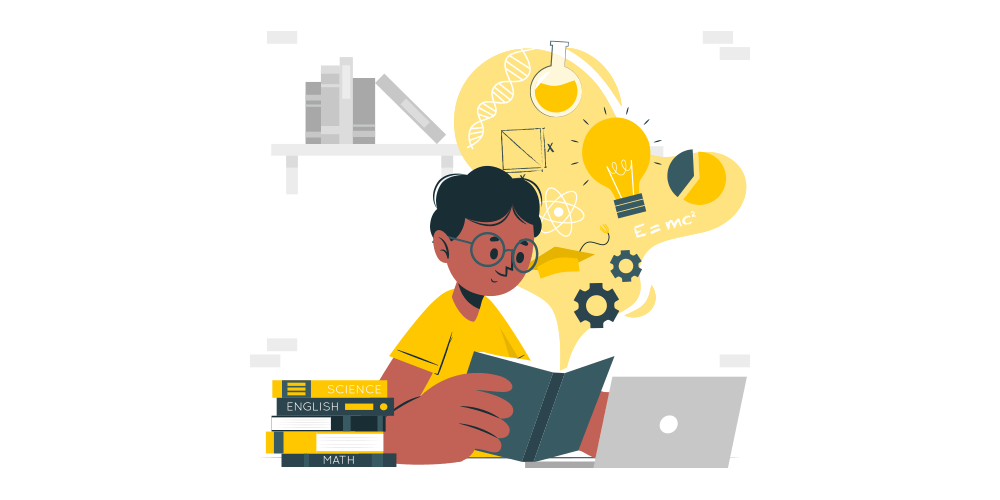This article will explore the role of Artificial Intelligence (AI) and Machine Learning (ML) in improving student outcomes. It will highlight the ways in which AI and ML can be used to personalize learning, improve student engagement, and support educators in providing a high-quality education to their students.
Artificial Intelligence (AI) and Machine Learning (ML) are rapidly changing the world we live in, and the education sector is no exception. AI and ML have the potential to transform education by providing personalized learning experiences, improving student engagement, and supporting educators in providing a high-quality education to their students.
Personalized Learning:
One of the most significant benefits of AI and ML in education is the ability to personalize learning. AI and ML algorithms can analyze data on student performance, behavior, and preferences to create personalized learning plans.

These plans can be tailored to the individual needs of each student, allowing them to learn at their own pace and in their own way. Personalized learning can help students to stay engaged, and motivated, and achieve better outcomes.
Adaptive Learning:
Another way in which AI and ML are improving student outcomes is through adaptive learning. Adaptive learning platforms use AI and ML algorithms to adjust the difficulty and pace of learning materials based on student performance. This approach ensures that students are challenged but not overwhelmed and that they can progress through the curriculum at a pace that is suitable for them.
Student Engagement:
AI and ML can also be used to improve student engagement. For example, chatbots and virtual assistants can be used to provide students with personalized support and guidance. These tools can be used to answer questions, provide feedback, and help students to stay on track.
AI and ML can also be used to create immersive learning experiences, such as virtual and augmented reality simulations. These experiences can make learning more engaging and interactive, helping students to develop a deeper understanding of the subject matter.
Educator Support:
AI and ML can also support educators in providing a high-quality education to their students. For example, AI and ML algorithms can analyze student data to identify areas where students are struggling and provide recommendations for interventions.
This approach can help educators to identify at-risk students early and provide them with the support they need to succeed. AI and ML can also be used to automate administrative tasks, such as grading and data entry, freeing up educators’ time to focus on teaching and learning.
Challenges:
Despite the many benefits of AI and ML in education, there are also some challenges that need to be addressed. One of the most significant challenges is the potential for bias in algorithms. AI and ML algorithms are only as good as the data they are trained on, and if the data is biased, the algorithms will be too. This can lead to unfair outcomes for some students and perpetuate existing inequalities.
Another challenge is the need for educators to have the skills and knowledge to use AI and ML effectively. Many educators may not have the necessary skills to integrate AI and ML into their teaching practice, and there is a risk that these technologies may not be used to their full potential.
Opportunities:
Despite these challenges, the potential of AI and ML in education is significant. These technologies have the potential to transform education by providing personalized learning experiences, improving student engagement, and supporting educators in providing a high-quality education to their students.
One of the most significant opportunities is the potential for AI and ML to democratize education. These technologies can be used to provide access to education for students who may not have had the opportunity to attend traditional schools, such as those living in rural or remote areas.
AI and ML can also be used to provide education to students who may have special needs or disabilities, providing them with tailored support to help them succeed.

Another opportunity is the potential for AI and ML to support lifelong learning. These technologies can be used to create personalized learning experiences for individuals of all ages and backgrounds, helping them to develop new skills and pursue new opportunities.
In addition, AI and ML can be used to improve the efficiency and effectiveness of education systems. For example, these technologies can be used to analyze data on student performance and identify areas where improvements can be made. This can help education systems to target resources where they are needed most, improving outcomes for all students.
Conclusion:
In conclusion, AI and ML have the potential to transform education by providing personalized learning experiences, improving student engagement, and supporting educators in providing a high-quality education to their students.
While there are challenges that need to be addressed, such as the potential for bias in algorithms and the need for educators to have the necessary skills, the opportunities that these technologies present are significant.
As we move forward, it is essential that we continue to explore the potential of AI and ML in education and work to ensure that these technologies are used in a way that benefits all students. By doing so, we can create a more equitable and accessible education system that meets the needs of students today and in the future.







